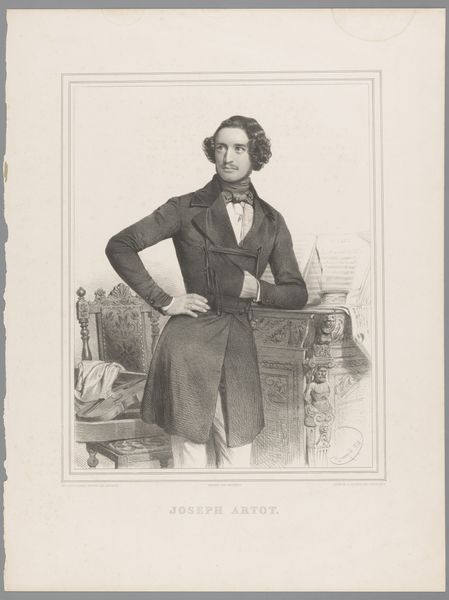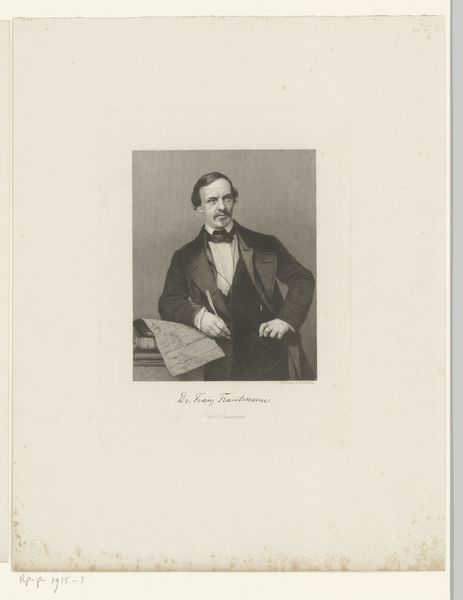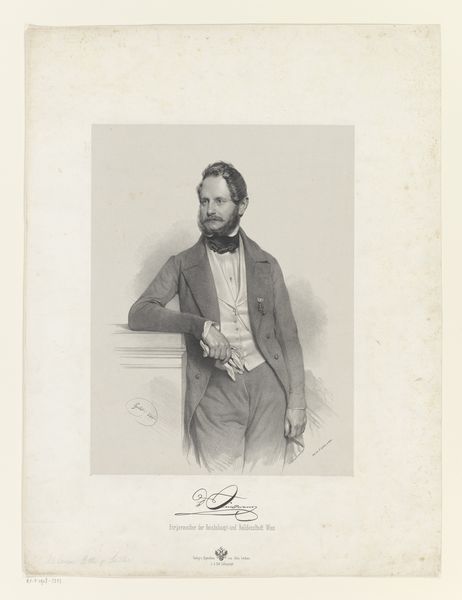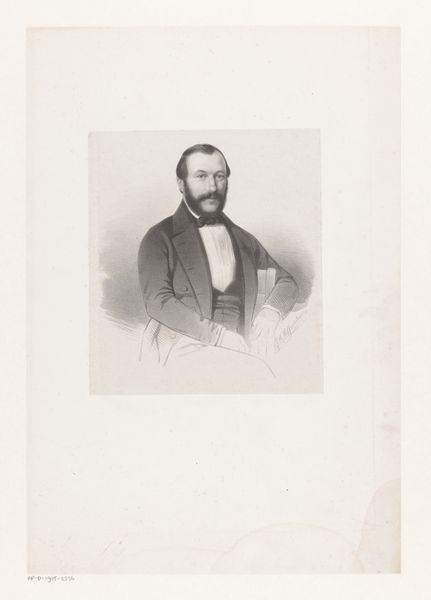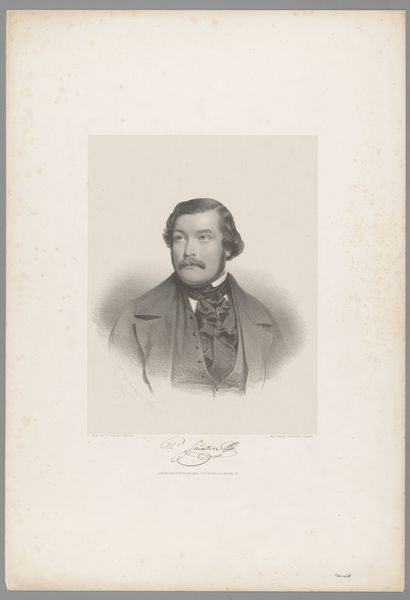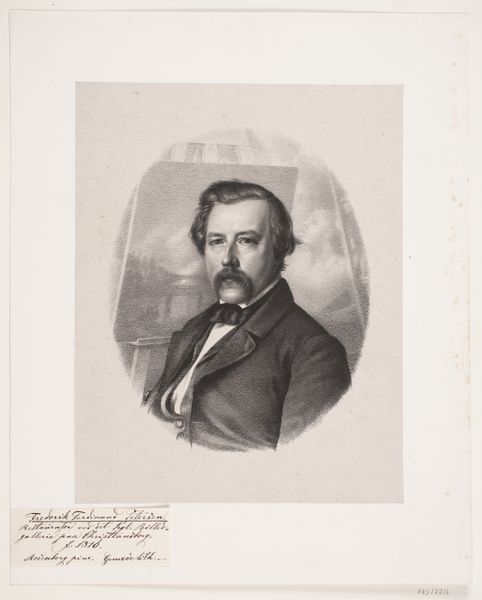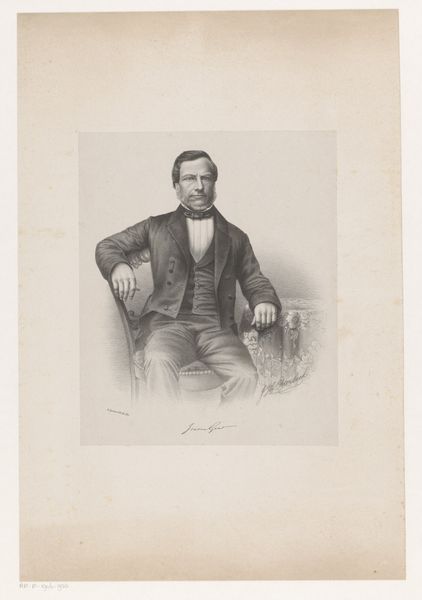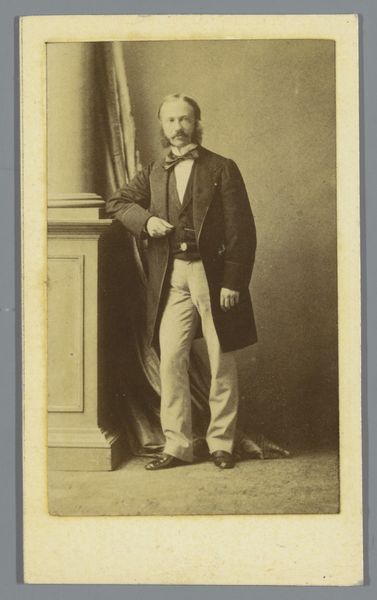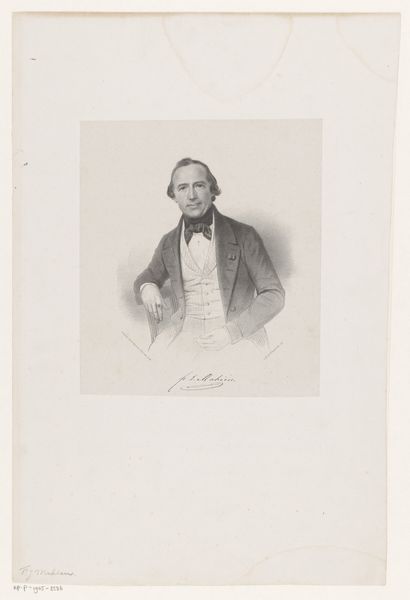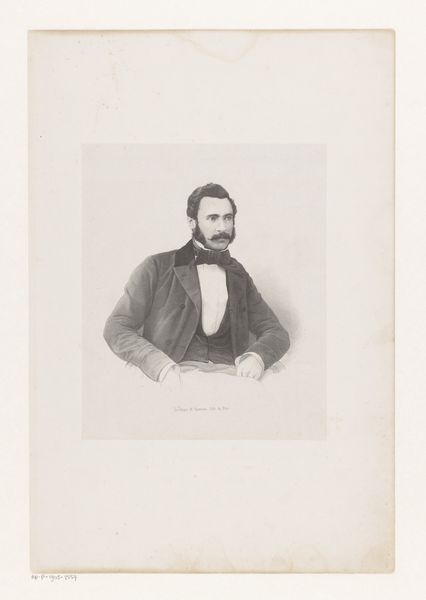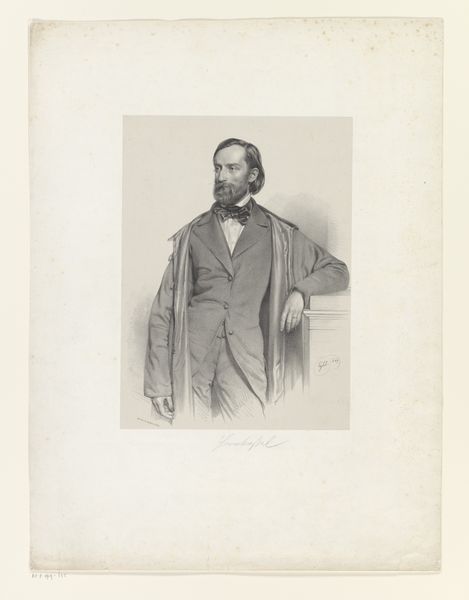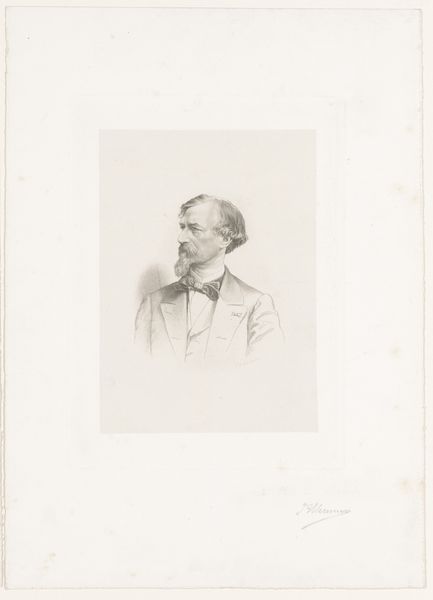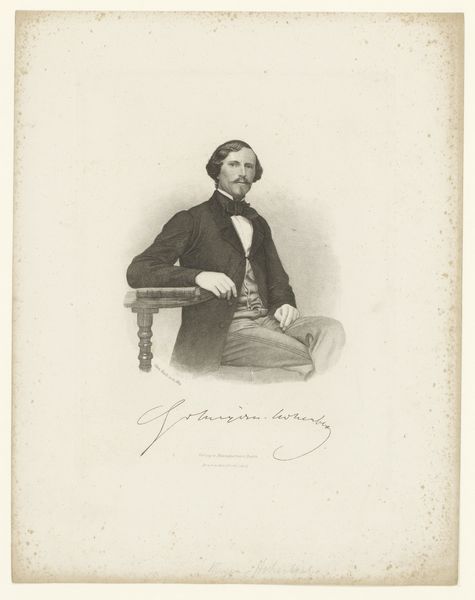
drawing
#
drawing
#
pencil drawing
#
academic-art
#
watercolor
#
realism
Dimensions: height 567 mm, width 443 mm
Copyright: Rijks Museum: Open Domain
Curator: I find this drawing remarkably captivating; the play of light and shadow is just so engaging. Editor: This is "Portret van Hippolyte Victor Valentin Sebron", a pencil drawing crafted around 1837 by Charles Baugniet, currently residing here at the Rijksmuseum. Sebron was an artist himself; I wonder how Baugniet’s depiction of him reflects or subverts the artistic norms of that period. Curator: Well, looking closely, the way Baugniet renders the texture of the clothing, the subtle gradations, it almost seems like he's trying to capture not just a likeness, but the very essence of the fabric, giving it volume and a certain palpable quality. It certainly showcases Baugniet’s mastery. Editor: Indeed. Baugniet’s strategy seems rooted in realism and academic-art. In that era, portraiture served a crucial social function, didn't it? Conveying status, character, and belonging all at once. Note how Sebron is posed beside an easel with painting— a clever way to signify profession and artistic legitimacy. Curator: Exactly! The composition almost tells a story. Sebron's posture, relaxed yet dignified, alongside his work, communicates his identity as an artist. I suppose there is this negotiation of how artists wish to be seen versus how society at large perceives them. Editor: The interplay between the domestic space and Sebron’s creative self is also a visual conversation. It reveals something about the public’s perception of the artist’s place in the world at the time. There’s this curtain in the background, too. A rather luxurious piece, wouldn't you say? That’s not accidental. Curator: It definitely frames the portrait within a specific context, giving him stature. The subtle details—the lighting, the texture, the compositional elements—each meticulously placed, it offers a visual dialogue about identity and perception in the 19th century. It goes beyond mere representation; it invites commentary. Editor: I agree. Baugniet pushes us to reconsider our perception and cultural understanding of artistic expression. The meticulous details serve more than visual appeal—they represent layers of contextual and societal narratives.
Comments
No comments
Be the first to comment and join the conversation on the ultimate creative platform.
